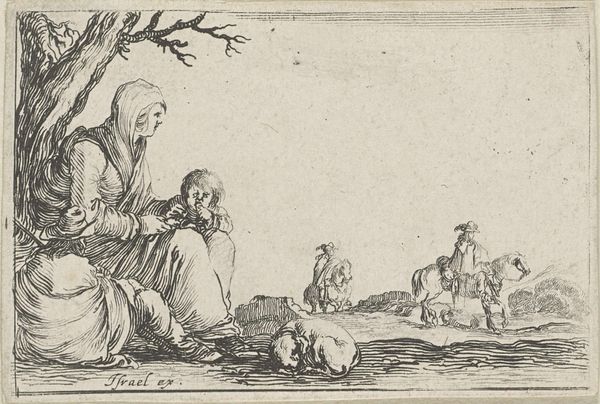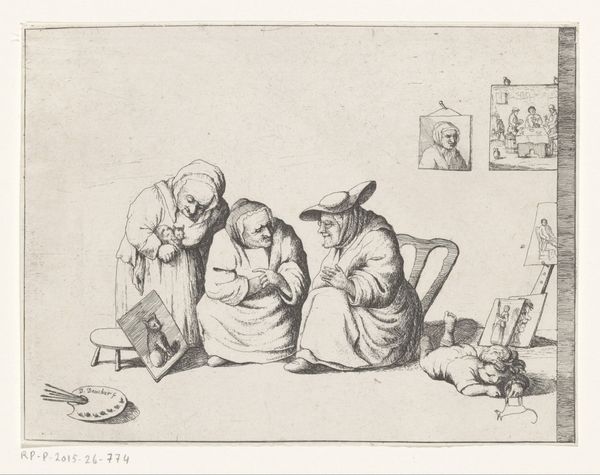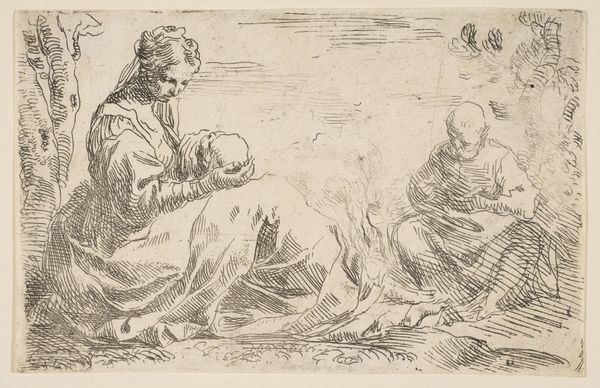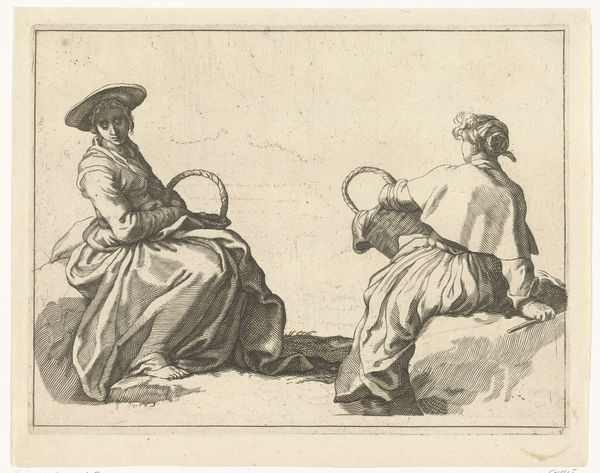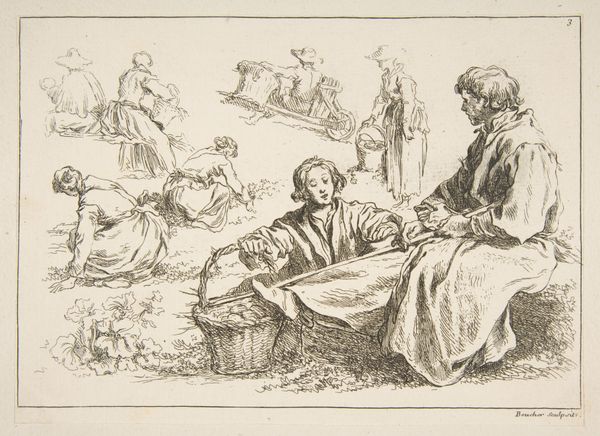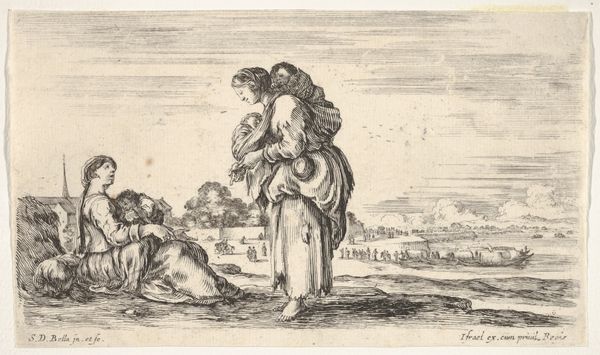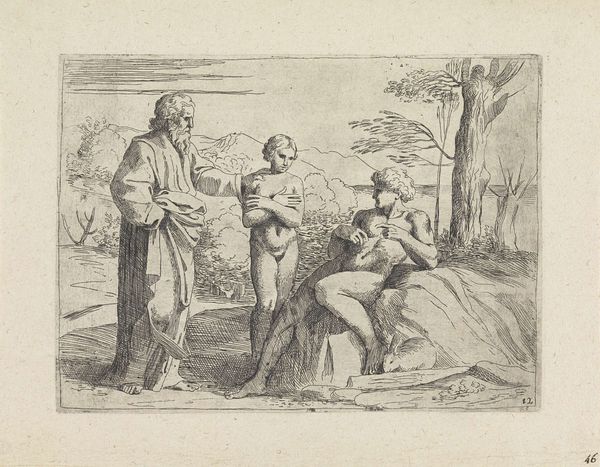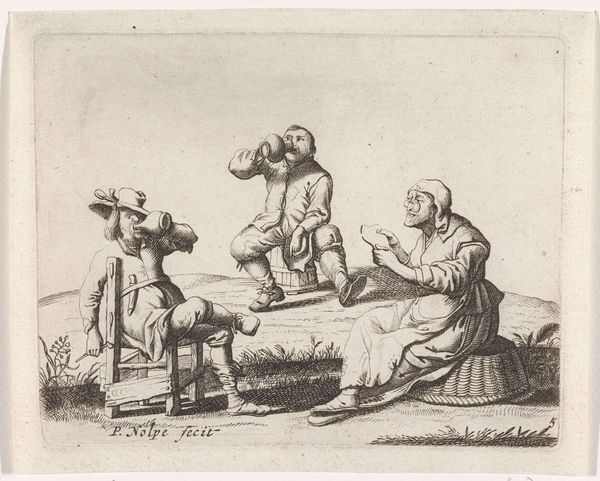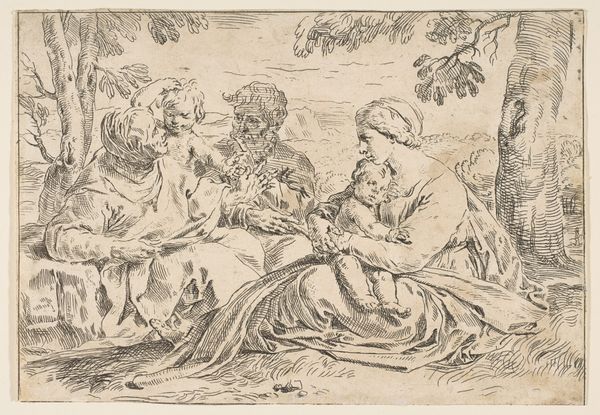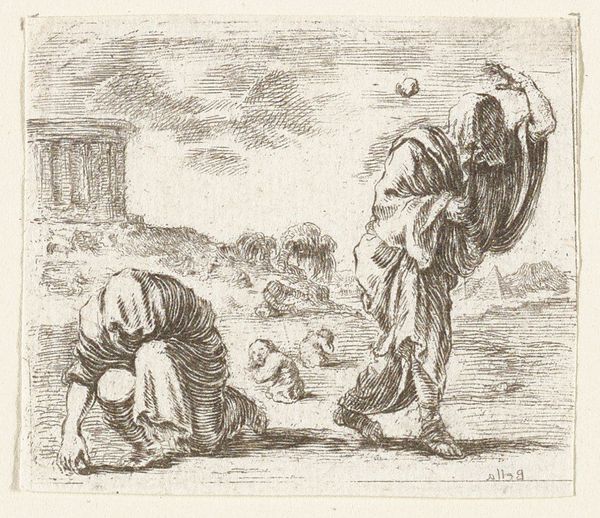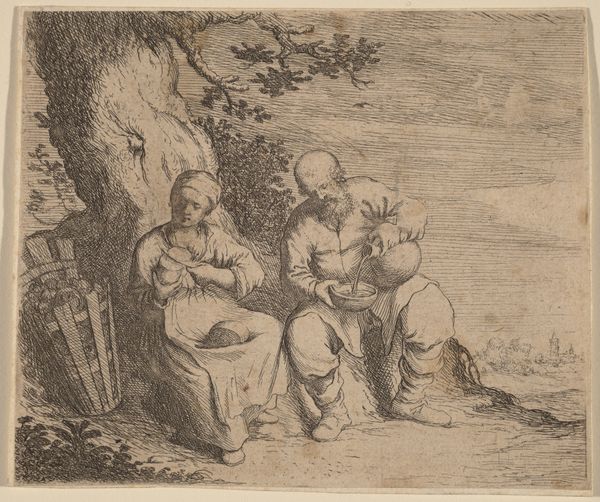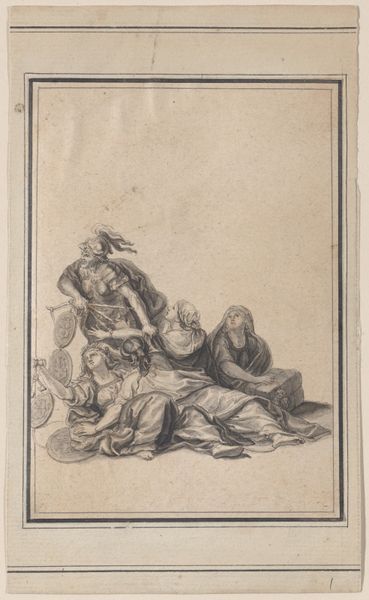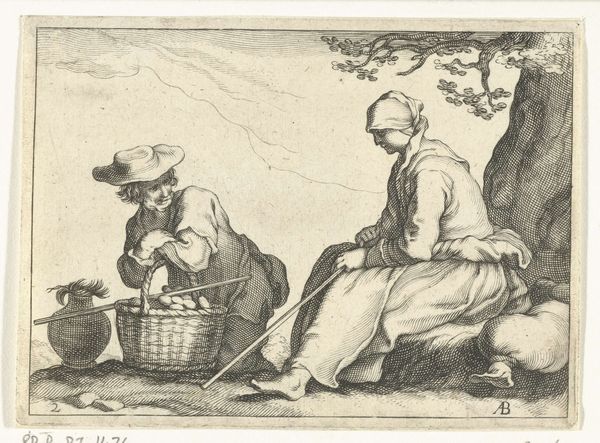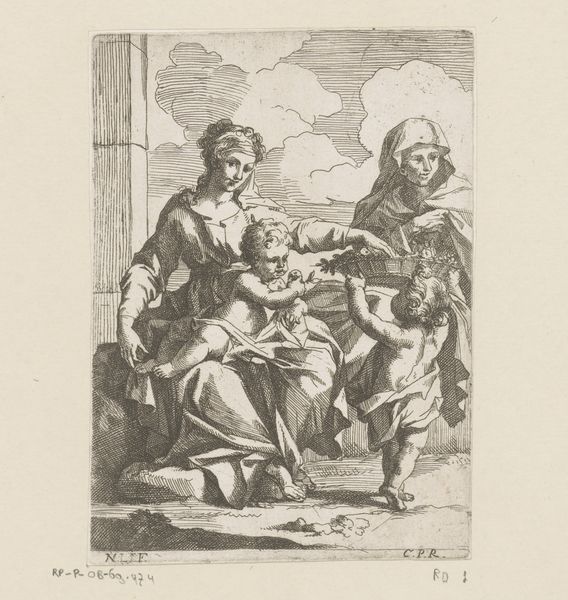
etching
#
portrait
#
baroque
#
etching
#
landscape
#
genre-painting
Dimensions: height 114 mm, width 171 mm
Copyright: Rijks Museum: Open Domain
Jan Wouwerman made this etching of a woman with two children in the Dutch landscape in the mid-17th century. Wouwerman’s technique involved covering a metal plate with a waxy ground, then scratching lines into the surface, exposing the metal. When the plate was submerged in acid, these lines were etched into the metal, creating grooves that would hold ink. This process allowed for the creation of multiple prints, making art more accessible. Look at the intricate details achieved through the etching process, from the delicate lines defining the figures' clothing to the subtle shading that creates depth and volume. Notice how the material qualities of the metal plate and the acid bath contribute to the overall aesthetic of the print. The labor-intensive nature of etching also speaks to the broader social context of art production. Considering the materials, making, and context invites us to appreciate the intricate work of art and how it challenges distinctions between fine art and craft.
Comments
No comments
Be the first to comment and join the conversation on the ultimate creative platform.
